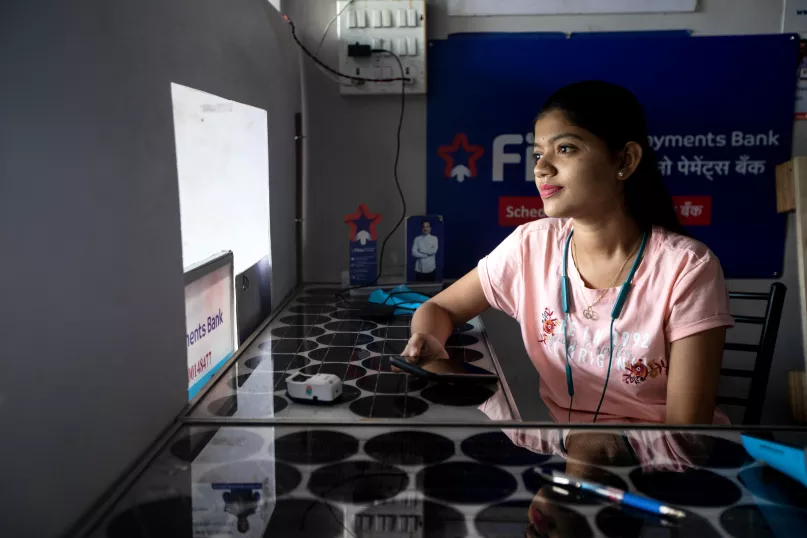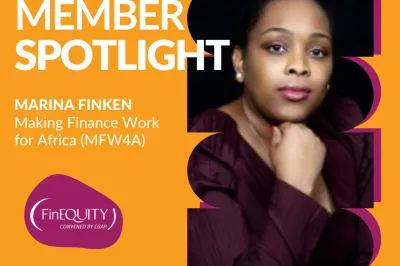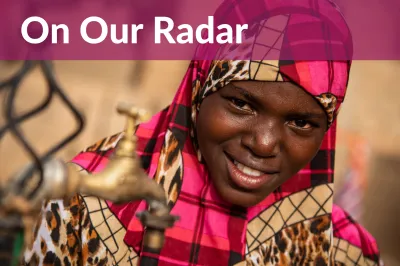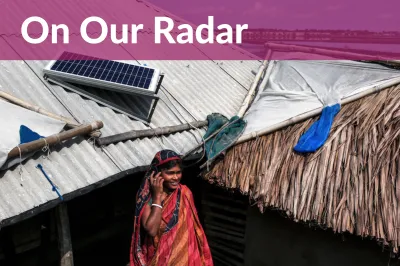How Can Designing Women-Focused Products Encourage Financial Inclusion?

This blog is part of FinEquity's collaboration with USAID on creating resources around gender-balanced workforce, conducting gender analyses and designing women-focused products.
From power tools to car seatbelts, the world has largely been designed to cater to men’s needs, often ignoring the diverse lives of the other half of the global population who identify as women. In this vein, financial products and services have traditionally been considered gender-neutral, but are, in fact, gender-blind: designed by men, for men (with women’s use welcome, but as an afterthought). Considering financial inclusion, more and more Financial Service Providers (FSPs) recognize the need (and benefit) of taking a gender-intelligent approach to design that considers and responds to women’s realities – acknowledging that gender gaps in account and mobile phone ownership and use are not going be solved on their own.
Over the last few months, FinEquity published a series of case studies focused on the research and design process taken by four very different FSPs to build products and services to improve women’s access to finance. Geographically and technically diverse, we probed each of them about their approach to gender, how they came to understand their customers’ needs and how that fed into the design of their products and services. For all the differences and the diverse challenges they sought to address, we noticed some common themes across the range of case studies.
Access
There are many ways that women experience access challenges: restrictive norms that keep them at home or without a mobile phone, limited time and large distances to travel into town, and transport challenges that restrict their ability to move freely. TymeBank noted that individuals and families were communing weekly at church and saw an opportunity to take their mobile bank there and onboard women in a relaxed social environment where peer encouragement was strong. For UNCDF and WMBL, Papua New Guinea’s (PNG) extremely rural reality meant their clients (all women) could not readily travel to WMBL’s one physical bank, and rarely had access to mobile phones. Only around 13% of Papua New Guineans live in urban areas; placing Mama Access Points (MAPs) – UNCDF and WMBL’s transportable banking stations – outside of urban environments allowed far greater numbers of women to access the MAP without having to attempt to navigate the costs, permissions and time commitment of further travel.
In comparison, Foreign Domestic Workers (FDWs) in Singapore were all based in an urban environment and most had mobile phones, but they lived with their employers and only had a single day off per week where they could travel to remittance agents to send money home. The Lucy app meant they could easily consolidate their formal and informal banking services and send money back to the Philippines right from their mobile phones.
All forms of literacy
Globally, women are less likely to be traditionally, digitally or financially literate than men. This was apparent across all the case studies, albeit in different ways. FinEquity’s work on digital financial literacy recognizes that physical assistance can be crucial in gaining comfort, confidence and familiarity with financial technology, and this proved true in each study. In PNG, women’s low rates of traditional literacy meant they were not able to sign their names – this was solved by designing a biometric solution. Customers could simply bring their paper banking passbook and then scan their fingerprints with the savings officer in order to verify their account and perform transactions. For TymeBank, limited digital literacy became apparent in the length of time that women took to onboard vis à vis men. To address this, TymeBank introduced ambassadors to offer customers greater assistance and help them achieve a level of comfort and familiarity that allowed them to become active users.
Behavioral nudges
Caring for family members, fetching water, tending the garden and feeding their families: women are often responsible for the lion’s share of household chores, rendering them time-poor, with lesser bandwidth to learn and adopt new practices. Behavioral nudges are small hacks that prompt a person to make quick decisions, while spending less energy doing so – crucial when there is so little space left in a woman’s day or mental bandwidth. For WomenSave, this means sending SMS messages to women on key days, reminding them to make their deposits toward their savings goals – as well as congratulating them on key milestones such as meeting a particular stage in their savings goals
Making savings goals more visible also offers a nudge to keep users on track – both UNCDF/WMBL and Lucy give users the option to have multiple savings pockets and custom name each pocket (for example, “Jeremy’s school fees”). Lucy even enables its women customers to add a photo to their savings pocket – perhaps a picture of a family home back in the Philippines. Similarly, WomenSave’s Commitment Savings Goals offer clients a clear, personalized and tangible plan to work towards an individual target, like purchasing livestock. Finally, when looking at their data, TymeBank noticed that clients were more incentivized to save when they could see their interest accruing daily rather than monthly. This subtle tweak resulted in fewer clients withdrawing funds and a more engaged client who is encouraged to save.
We know that assuming the ‘if you build it, they will come’ approach often does not work, yet it remains prevalent in the rollout of women’s financial services. These case studies are small examples that nonetheless demonstrate the importance and benefit of informed design – unsurprisingly, they all involve substantial engagement with the end user. The case studies themselves offer a far more in-depth look at the process each of the providers took, as well as the FinEquity and Digital Frontiers Institute webinar with WomenSave and Lucy and CGAP’s podcast episode featuring WMBL/ UNCDF. Building off the findings on behavioral nudges, FinEquity plans to publish a quick guide to heuristics in the fall.
Finally, we are excited to announce that in mid-2022, FinEquity will publish a curated set of gender-intelligent design resources that include guidelines, examples and toolkits to offer guidance and focus attention on creating products and services that serve women’s needs.



Thank you for this very interesting article. Would like to learn more about nudges and heuristics that have proven efficient.
Interesting case studies from PNG and Singapore. Looking forward to reading more in the fall. Thanks.
Leave a comment